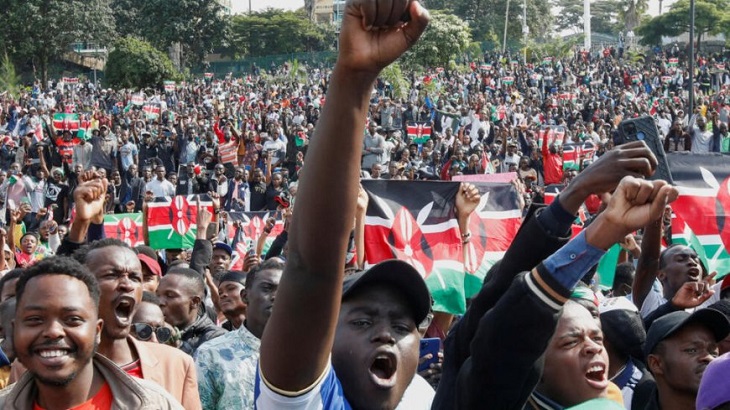By all accounts, Kenya’s economy has been through the wringer. From the shockwaves of post-election violence to the recent Gen Z-led protests that have shaken the political class out of its comfort zone, the road to economic stability has been anything but smooth. But through it all, one thing stands out: Kenya remains resilient; bruised, yes, but not broken.
There is no sugarcoating it; the Kenyan economy is under pressure. High public debt, a depreciating shilling, soaring cost of living, and rising youth unemployment have created a tense environment. Households are stretched, businesses are cautious, and investors are watching from the sidelines. The sense of urgency is palpable.
Yet despite these trials, Kenya has not spiraled into economic collapse. The economy continues to grow, albeit modestly. The Central Bank of Kenya projects a GDP growth rate of over 5% in 2025, driven by agriculture, ICT, construction, and the ongoing post-COVID recovery in tourism and services. These figures suggest an economy that is not only surviving adversity but one that holds promise — if managed wisely.
The Gen Z protests that rocked Nairobi and other towns in June and July 2024 were not just about the now-withdrawn Finance Bill; they were a clarion call from a generation that feels excluded from Kenya’s economic progress. Rather than being seen purely as disruptive, these protests were an important democratic reckoning. They forced national conversations on taxation, public debt, governance, and inclusivity.
Related Content: Digital Economy To Contribute Ksh 662 Billion To Kenya’s GDP
That such protests can happen peacefully, be acknowledged by the government, and even prompt shifts in policy, is itself a sign of democratic and institutional maturity. In some ways, these protests were less a sign of economic despair and more a declaration that Kenya’s young people will no longer be bystanders in the country’s economic future.
With all those challenges, the government’s economic strategy has attracted both applause and criticism. Programs like the Affordable Housing Programme, the Hustler Fund, and targeted investments in manufacturing and digital jobs are steps in the right direction, aimed at broadening job opportunities and easing the cost of living. However, implementation gaps, corruption concerns, and unclear communication have often diluted their intended impact.
Take the Affordable Housing Programme: if executed with transparency and efficiency, it could stimulate construction, create thousands of jobs, and reduce Kenya’s massive urban housing deficit. But for many, questions still linger: who are the real beneficiaries? Are the jobs sustainable? Will housing become affordable?
Similarly, the Hustler Fund had a good premise: financial inclusion for the unbanked. Yet concerns around loan sizes, interest structures, and repayment discipline have limited its transformational impact. What is needed now is a more strategic alignment between intent and execution, and most importantly, listening to citizen feedback.
Kenya’s greatest asset is not its tea, its wildlife, or its silicon savannah; it’s its people. A youthful, educated, and increasingly vocal population is a demographic dividend in waiting. But only if opportunities match expectations. With 70% of the population under 35, the need for job-centric, tech-driven, and climate-smart economic policies has never been more urgent.
There are bright spots. Nairobi continues to attract tech investments, positioning itself as East Africa’s digital hub. Kenya’s geothermal and renewable energy capacity is world-class, offering potential in green manufacturing and sustainable growth. The agriculture sector, if modernized and properly incentivized, can feed the region and earn Kenya billions in exports.
The economic resilience seen so far should not be mistaken for invincibility. Kenya cannot afford to keep kicking the can down the road. Structural reforms must go beyond taxation — they must address public spending inefficiencies, expand the tax base through inclusion (not overburdening), and create room for private sector-led growth.
Corruption, which remains an open wound, must be confronted with renewed seriousness. Every shilling stolen is a job lost, a classroom unbuilt, or a hospital unequipped. Public trust is Kenya’s most endangered resource right now; rebuilding it requires more than rhetoric; it needs accountability and transparency.
Kenya’s economy has a long way to go; that is undeniable. But all is not lost. The turbulence of recent years has stirred a new civic awareness and sharpened the national appetite for change. This could be the turning point.
If the government listens, reforms genuinely, and unlocks the potential of its youth, Kenya’s economy can do more than bounce back; it can transform. The story of this country has never been about easy wins. It has always been about resilience, and in that, Kenya still leads.
Related Content: How Coastal Kenya’s Youth Are Redefining The Blue Economy













